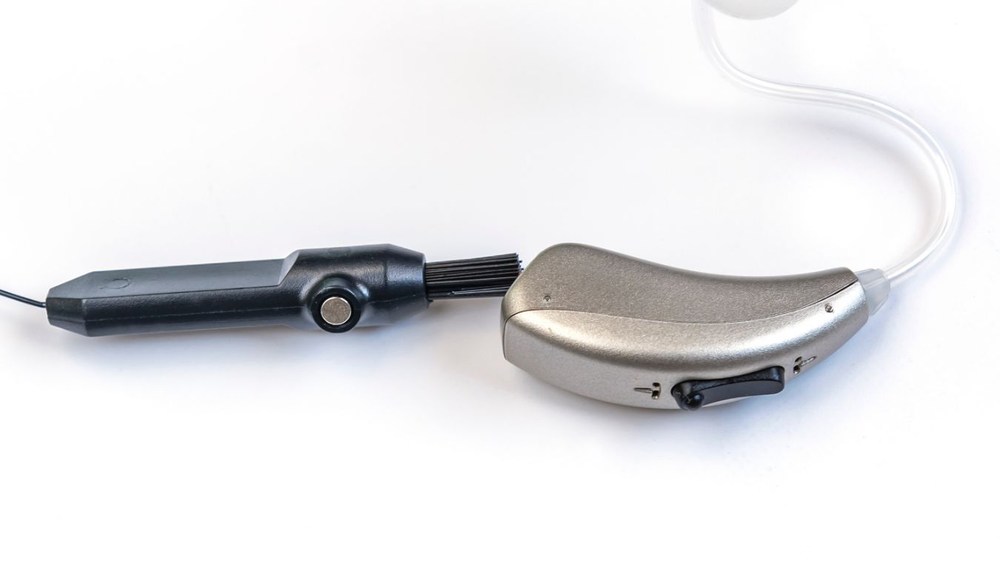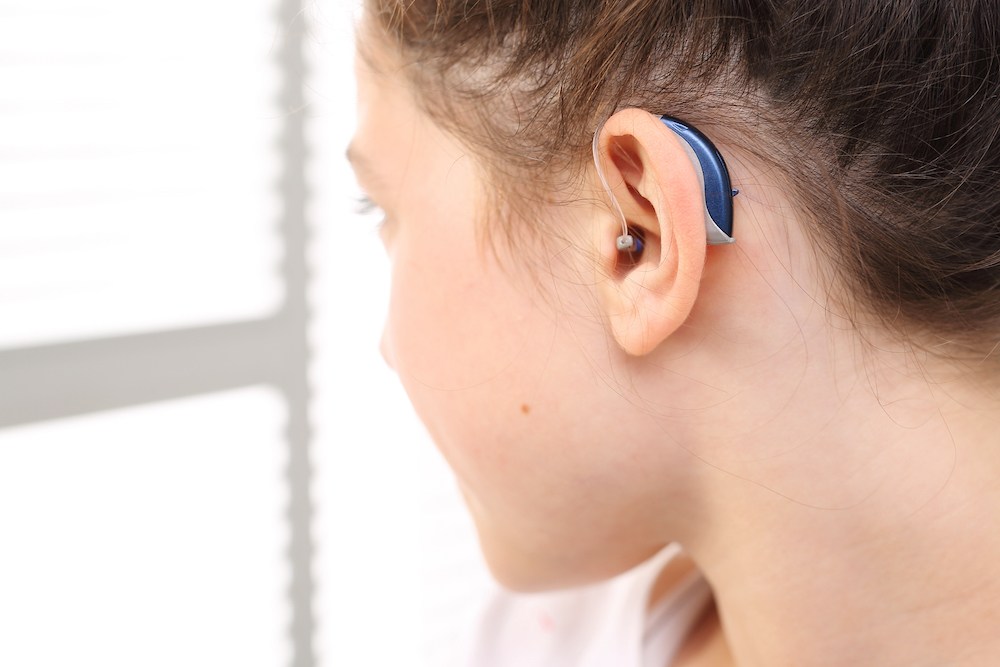The Role of Big Data in Hearing Aid Development
Hearing care has changed significantly over the past few decades. What was
Now Serving Bremerton & Welcoming Patients from Audiologists NW! Schedule Today →

By: admin | August 21, 2025
Hearing care has changed significantly over the past few decades. What was once limited to basic hearing tests and general-fit solutions has developed into a field that can measure hearing loss with greater precision and create devices tailored to individual needs. Today’s hearing aids can process a wide range of listening environments, adapt to an individual’s preferences and make adjustments automatically as conditions change. The shift from basic devices to advanced digital technology has expanded the options available for improving hearing.
A major factor in these advancements is the use of big data, gathered from millions of hearing aid wearers in everyday situations. While in use, today’s devices can record details about environments that present challenges, features that are used most often and changes in hearing patterns over time. When combined with data from many other individuals, this information supports the development of improved algorithms, helps audiologists design more focused care plans and informs new research in hearing loss treatment. These changes are making hearing care more tailored, effective and able to adapt to each person’s daily listening needs.
Big data is changing the way hearing aid technology is developed and refined. With gathering information from many individuals, manufacturers can see patterns in how hearing aids are used in everyday life. This goes beyond lab testing, offering insights into the types of environments people experience most and the challenges they face. With this knowledge, features can be created or adjusted to better match real listening situations, making it easier for individuals to hear clearly without constant manual adjustments.
The information collected also helps improve comfort, usability and overall performance. Data on preferred settings, common adjustments and long-term use patterns gives designers a clearer picture of what people need from their devices. This allows for more thoughtful design choices, from the way controls are placed to how automatically the device adapts to changes in sound. As a result, hearing aids are becoming more effective and user-friendly, reflecting the real-world needs of the people who wear them.
Hearing aids equipped with modern technology can collect useful details from a person’s daily life, which plays a key role in big data research. As someone goes about their routine, whether they are at work, spending time with friends or relaxing at home, the devices can track information like the types of sound environments encountered, how often the volume is adjusted and which features are used most often. This process happens quietly in the background without interrupting daily activities. Over time, these details create a clear picture of real-world listening needs.
When this information is shared with permission and combined with data from thousands of people, it helps manufacturers and audiologists understand common challenges and habits. For example, patterns may show that many individuals have more difficulty in certain environments or prefer specific settings at particular times of day. These insights guide the development of new features, fine-tune automatic adjustments and improve overall performance. Learning from everyday experiences, hearing aids can be designed to better match the way people live, making them more effective and easier to use.
Today’s hearing aids can collect many different kinds of information that help improve both performance and comfort. One of the most basic details recorded is how many hours the devices are worn each day. This can reveal patterns, like when someone depends on their hearing aids the most or times when they tend to remove them. They also monitor the listening environments a person experiences, whether that is a quiet living room, a busy sidewalk or a crowded cafe. By recognizing these surroundings, the devices can make automatic adjustments to suit the situation without the need for constant manual changes.
Beyond wear time and environment tracking, some hearing aids capture more specific sound information. They can measure background noise levels, detect the direction a sound is coming from and even distinguish between speech and non-speech sounds. This allows the devices to prioritize important sounds, like a voice in conversation, while softening unwanted noise. The data also includes how often certain features are activated, like noise reduction or speech enhancement, giving valuable feedback on which functions are most helpful in daily life.
All of this information plays a key role in shaping future hearing aid design and programming. When patterns from many individuals are studied together, manufacturers and audiologists can identify areas that need improvement and create solutions that better match real-world needs. Over time, this process results in devices that adapt more naturally, provide clearer sound in challenging environments and fit more seamlessly into everyday routines.
Big data offers a clearer view of how hearing difficulties appear in different parts of daily life. Instead of relying solely on short hearing tests, it uses information gathered over time to highlight situations where listening tends to be more challenging. These could involve subtle details, like how quickly someone can pick up a conversation in a changing environment or how certain acoustic settings affect speech clarity. Studying these trends, developers can see where current technology is falling short and where new solutions are needed.
Some of the most valuable insights come from patterns that are not obvious during in-office evaluations. For instance, a person might have no trouble hearing in a one-on-one conversation yet still miss important cues in a hallway full of soft background sounds. When these less noticeable challenges surface repeatedly across a large group of people, it signals an opportunity to make technology that responds more effectively in those specific moments.
This approach also helps guide long-term improvements in hearing aid design. Once recurring challenges are clearly understood, software and hardware can be adapted to address them in a more targeted way. This leads to devices that do more than simply amplify sound, they anticipate where listening is likely to become difficult and respond in a way that makes communication smoother in everyday situations.
Data insights are helping hearing aids deliver better sound quality in all kinds of places, from quiet living rooms to busy shopping centers. By analyzing how people use their hearing aids every day, companies can see which settings work best for different environments. This means your device can adjust itself more quickly and accurately, so sounds stay clear and comfortable.
Some people still notice that sounds can seem too sharp or muffled in certain situations. Hearing aids that collect information about your listening habits and make automatic adjustments based on these details can help solve this problem. Features like real-time changes to reduce background noise, automatic volume control for sudden loud or soft sounds and personalized settings for places you visit often all contribute to clearer speech and lower background noise. With ongoing updates based on real user data, sound quality continues to improve over time.
Big data allows hearing aids to be adjusted in ways that reflect individual preferences and real-world experiences. Patterns in how devices are used help manufacturers and audiologists identify which settings work best in different situations. This information makes it possible to create more tailored configurations, ensuring that sounds are balanced in a way that fits each person’s daily life.
The data also guides ongoing improvements, showing where small adjustments can enhance comfort and clarity. Instead of relying on occasional check-ins, these insights allow settings to evolve naturally over time, making the device feel more intuitive. This approach helps ensure that hearing aids support communication in a way that matches each person’s unique listening habits and routines.
Identifying patterns in how you use your hearing aids each day helps make devices work better for you. By looking at how often you wear your hearing aids, when you adjust the volume and which environments lead to the most changes, companies can learn what features are most helpful. This information supports the design of hearing aids that fit smoothly into your everyday routine.
When these patterns are understood, updates can be made to improve comfort and sound quality throughout the day. Paying attention to your own habits also helps you get more out of your device and makes listening easier in every part of life.
Real-world feedback plays a major role in improving the comfort and fit of hearing aids. Data collected from daily use helps manufacturers understand how different shapes, materials and sizes affect wear over time. This information highlights issues like pressure points, slipping or discomfort during long periods of use. Designers can use these insights to refine the physical design of hearing aids so they sit securely and feel natural throughout the day. The result is a device that is easier to wear and less distracting, allowing the focus to stay on listening rather than adjusting the fit.
Comfort improvements also extend to how hearing aids interact with the wearer’s lifestyle. Data shows patterns in how people move, sweat or use their devices in various environments, which can inform better moisture resistance, weight distribution and ergonomic design. Audiologists can use this feedback to recommend models or adjustments that suit specific routines and habits. Over time, these refinements help reduce the need for repeated modifications and make the devices feel more like a seamless part of daily life. Using real-world input in this way ensures that hearing aids are not only effective but also comfortable enough for consistent long-term use.
Protecting your privacy is very important when big data is used in hearing aid technology. Companies and audiologists follow strict rules to keep your personal information secure. To help keep your data private, you can check if the company uses strong security measures like encryption, read privacy policies to understand how your information is used and ask about options for limiting what data is shared. These steps help ensure your details stay protected while still allowing hearing aids to improve through big data.
Big data is shaping the future of hearing aids by making them smarter and more personalized for everyday life. Sharing information about how you use your device helps create better features and sound quality for everyone. This collaboration between individuals, technology and audiologists leads to hearing aids that match your needs more closely than ever before.
If you have questions about how the latest advancements in big data can improve your own hearing experience, schedule an appointment with an audiologist. If you’re located in Washington, Harbor Audiology & Hearing Services Inc., is ready to assist with your hearing needs. You can contact any of our Washington hearing clinics at:
We’re available at multiple locations to make accessing hearing care convenient for you.
Tags: hearing aid basics, hearing aid repair, hearing aid styles

Hearing care has changed significantly over the past few decades. What was
By: admin | August 21, 2025

Your hearing is connected to your overall health in ways many people
By: admin | April 24, 2025

Clear hearing affects independence, safety and quality of life in
By: admin | March 21, 2025

